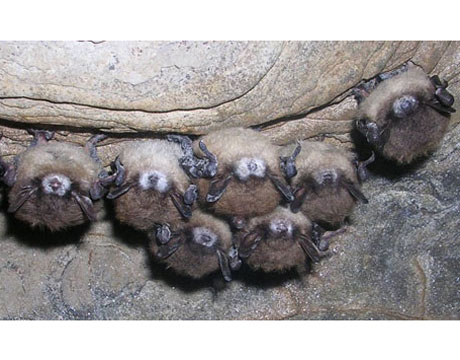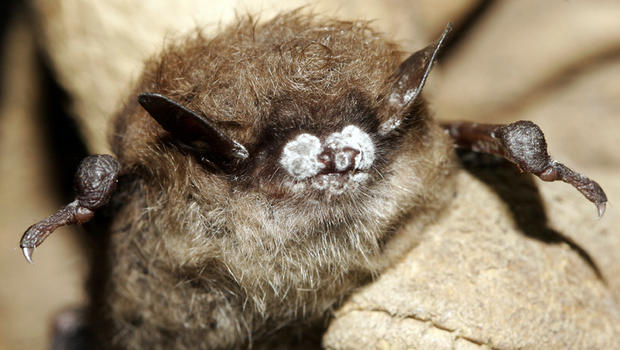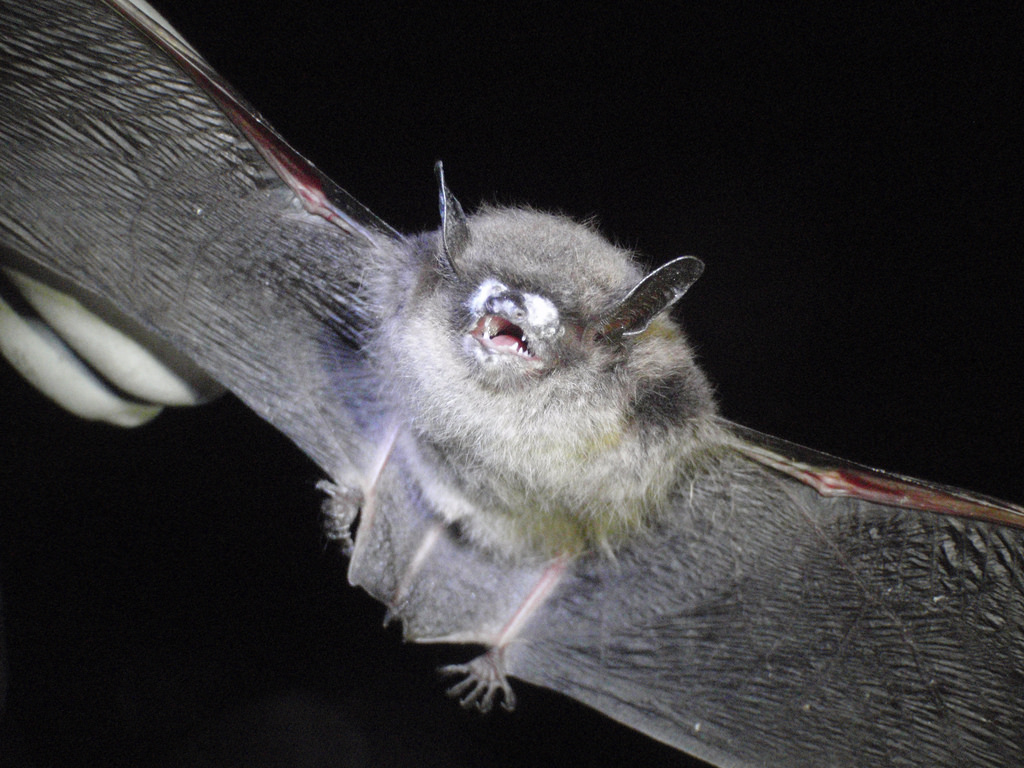It is estimated that in the eastern states and provinces over six–million bats have been killed by, an invasive fungus called white-nose syndrome (WNS). The fungus invades bats that are hibernating, causing the bats to wake up early, which in turn depletes their fat reserves, creates dehydration and eventually causes death. Sadly the first case was detected in the west in March 2016.
We are asking your help!
While you are out and about this fall enjoying your handful of bike rides and hikes before the snow flies be on the look out for BATS.
What does WNS look like?
A bat with White Nose Syndrome make exhibit some of the following symptoms:
- White, powdery fungus seen around muzzle, ears, wings/limbs and tail.
- Thin and/or dehydrated and furless areas appear wrinkled and flaky
- Strange behaviour! Bats that are lying outside of their hibernacula (that is Latin and means “tent for winter quarters”), increased activity in winter when they should be hibernating and/or bats flying during the day.

If you find sick or dead bats follow these steps:
- Contact any of the specialists listed in the White Nose Syndrome Fact Sheet (page 4)
- Read the fact sheet for FULL details on bat collection protocol (page 3)
Other things you can do to help:
- Prevent accidental transport of bats eg) RV awnings, sun umbrellas, semi truck trailers, moving containers. Do not leave doors open!
- Do not enter bat roosting habitat in BC with any equipment or clothing used in other bat roosting areas.
- Contact the Kootenay Community Bat Project for other tips you can do to help our native bat population….like build a bat house.




